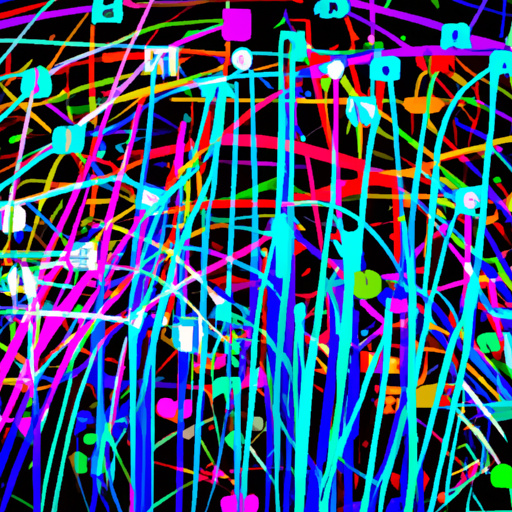Understanding Knowledge Graph in the Context of AI
Introduction
In today's digital age, businesses are constantly seeking ways to leverage artificial intelligence (AI) to improve their operations and customer experiences. One AI concept that holds immense value for businesses is the Knowledge Graph. In this article, we will delve into what a Knowledge Graph is and how it relates to AI.

What is a Knowledge Graph?
A Knowledge Graph is a powerful tool that helps machines understand and organize complex information by creating connections and relationships between different pieces of data. It provides a structured representation of knowledge that can be used to enhance AI systems' ability to reason, learn, and answer questions.
How Does a Knowledge Graph Work?
At its core, a Knowledge Graph is built upon a network of entities, properties, and relationships. Entities could be individuals, concepts, or even businesses, while properties define characteristics or attributes of these entities. Relationships establish connections between entities, linking them together based on their shared properties or related concepts.
For instance, in a business context, a Knowledge Graph could include entities such as customers, products, orders, and employees. The properties of these entities could be their names, addresses, purchase history, skill sets, etc. Relationships would then link entities together, such as connecting customers to their orders, or employees to the products they work on.
The Benefits of Knowledge Graphs in AI
1. Enhanced Data Integration and Exploration
- Using a Knowledge Graph, businesses can integrate various data sources and formats into a single, unified framework.
- This integration enables AI systems to access and explore a wide range of data sources, creating a holistic view of information that can drive better decision-making processes.
2. Contextual Understanding and Reasoning
- The relationships within a Knowledge Graph enable AI systems to gain a deeper understanding of data by placing it in context.
- With this contextual knowledge, AI systems can reason, infer new information, make predictions, and answer complex queries more accurately.
- This capability allows businesses to extract actionable insights from their data and make informed decisions.
3. Facilitating Natural Language Processing
- Knowledge Graphs play a crucial role in enabling natural language processing (NLP) applications.
- By leveraging the relationships and knowledge stored within the graph, AI systems can better comprehend and respond to human queries and commands.
- This leads to more intuitive and efficient interactions between humans and AI systems, improving customer service and user experiences.
4. Enabling Intelligent Recommendation Systems
- With a Knowledge Graph, businesses can improve their recommendation systems by understanding the nuanced relationships between customers, products, and other entities.
- By analyzing past behaviors, preferences, and similar patterns, AI systems can provide personalized and relevant recommendations to customers, boosting customer satisfaction and engagement.
5. Continuous Learning and Adaptability
- A Knowledge Graph provides a scalable framework for storing and organizing knowledge.
- This enables AI systems to continuously learn and grow as new information becomes available.
- By updating and expanding the graph with new data, businesses can ensure their AI systems remain up-to-date, adaptable, and capable of providing accurate insights and recommendations.
Conclusion
With AI playing an increasingly important role in business operations, leveraging a Knowledge Graph can provide numerous advantages. By organizing and connecting complex data, Knowledge Graphs enable AI systems to understand context, reason effectively, facilitate natural language processing, improve recommendation systems, and continually learn and adapt. By harnessing the power of Knowledge Graphs, businesses can unlock valuable insights, enhance customer experiences, and stay ahead in this rapidly evolving digital landscape.